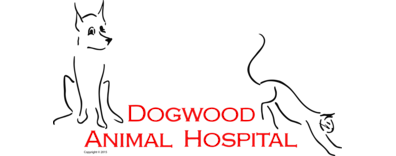Dogwood Animal Hospital

Articles
Category:

Identifying Dementia in Senior Dogs
Newsletter Library
Have you noticed changes in your older dog's behavior?

Keep Your Pets Safe From Toxic Household Items
Newsletter Library
Do you know which household items can sicken your pet?

Preventing Obesity in Cats
Newsletter Library
Even one extra pound could affect your pet's health. Find out how you can keep your cat slim and trim.

Pet Dental Care - Tips to Manage Your Pet’s Oral Health
Newsletter Library
Do you know how to keep your pet's teeth and gums healthy?

Learn How to Master Walking Your Dog for Walk Your Pet Month
Newsletter Library
Does your dog need a little help walking on a leash?

Bringing a New Pet in the Home in the New Year
Newsletter Library
Are you planning on adding a pet to your family this year? These tips will help you prepare for the arrival of your furry, feathered, or finned friend.

Cold Weather Pet Safety
Newsletter Library
Do you know how to keep your pet safe this winter?

Keep Your Pet Safe During the Holidays
Newsletter Library
Keep Thanksgiving day safe for your pet by following these tips.

November is Pet Cancer Awareness Month
Newsletter Library
Do you know the symptoms that can occur if your pet has cancer?

How to Treat Common Injuries in Your Dog
Newsletter Library
Would you know what to do if your dog was injured?

Safety Guidelines for Pet Costumes
Newsletter Library
Do you know how to keep your pet safe when wearing a costume?

9 Reasons Your Cat May Be Losing Weight
Newsletter Library
Does your cat look thinner than usual? One of these nine reasons may explain why your cat is losing weight.

Anemia in Dogs
Newsletter Library
Anemia doesn't just affect people. Your dog can become anemic too.

How to Treat Common Paw Problems in Dogs
Newsletter Library
Have you noticed a change in your dog's paws? One of these paw problems may be to blame.

Teaching Your Child to Care For Their First Pet
Newsletter Library
Is a new pet in your family's future? These tips will help your child learn pet care essentials.

Today's Veterinarian
Today's Veterinarian
Veterinarians solemnly swear to use their scientific knowledge and skills "for the benefit of society through the protection of animal health and welfare, the prevention and relief of animal suffering, the conservation of animal resources, the promotion of public health, and the advancement of medical knowledge."

The Veterinary Approach
Today's Veterinarian
Veterinarians employ state of the art technology that is very similar to technology used in the treatment of humans. Veterinarians in private clinical practice work to prevent disease and other health problems in their patients.

Vetopedia
Today's Veterinarian
Vetopedia is a glossary of terms used by vets in treating animals. Association of American Feed Control Officials; an organization which sets standards for pet food ingredients and minimum daily requirements.

What We Do
Today's Veterinarian
Doctors of Veterinary Medicine and Veterinary Surgeons are medical professionals whose primary responsibility is protecting the health and welfare of animals and people. The term "veterinarian" comes from veterinae, which means "working animals."

What We Learn
Today's Veterinarian
Continuing education is important, even after veterinarians have completed their college studies and acquired the appropriate licenses. Students interested in a career in veterinary medicine should begin their preparation by doing well in general science and biology in junior high school.

You & Your Vet
Today's Veterinarian
Your veterinarian will rely on your awareness of small changes in your pet's behavior or habits. As the pet owner you must communicate your pet's health care needs to your veterinarian. Nobody knows your pet like you.

Hypothyroidism
Chronic Conditions
Hypothyroidism is the natural deficiency of thyroid hormone and is the most common hormone imbalance of dogs. This deficiency is produced by several different mechanisms. The most common cause (at least 95% of cases) is immune destruction of the thyroid gland.

Seizures
Chronic Conditions
Seizures are common in dogs, but more unusual in cats. Seizures are just symptoms which can occur with many kinds of diseases. They can happen because of diseases outside the brain or inside the brain.

Liver Shunt
Chronic Conditions
A liver shunt is also named a PSS, portosystemic shunt, portacaval shunt or portosystemic vascular anomaly. This abnormality occurs when a pet's venous blood from the intestine bypasses the liver.

Epilepsy
Chronic Conditions
Epilepsy (often referred to as a seizure disorder) is a chronic neurological condition characterized by recurrent unprovoked seizures. It is commonly controlled with medication, although surgical methods are used as well.

Vertigo or Old Dog Vestibular Syndrome
Chronic Conditions
Vertigo is a syndrome in the elderly dog, which can be very frightening to the owners. The dog is suddenly afflicted with a balance problem, usually staggering, but occasionally unable to stand, and more rarely actually rolling over and over.

Obesity
Chronic Conditions
Excess weight is a serious health problem for dogs and cats and is common in many countries. The two main causes of obesity are too much food and too little exercise. Other contributing factors can be due to hormonal influences, certain genetic factors, and other disease processes.

Diabetes Mellitus
Chronic Conditions
Diabetes Mellitus (DM) is a life long disorder of dogs and cats that results when the pancreas fails to produce enough insulin to meet the animal's needs. Insulin is a hormone needed to transport glucose (blood sugar) into the body's cells.

Cancer
Chronic Conditions
Cancer, by definition, is the uncontrolled growth of cells. Any type of cells in the body can become cancerous. Once these cells grow out of control, they take over areas previously occupied by normal cells; sometimes these tumor cells break off and travel to other areas of the body.

Bloat and Gastric Torsion
Digestive and Oral Health
Bloat and gastric torsion is a serious condition and your pet should be rushed to the emergency room if this occurs. Certain breeds of dogs with deep chests and narrow waists, such as hounds, bouvier des Flandres, or doberman pinschers are more susceptible to a syndrome of gastric torsion and bloat.

Gastric Dilation Volvulus (GDV)
Digestive and Oral Health
Gastric Dilation Volvulus (GDV) is a life threatening, acute condition that requires immediate medical attention. Certain breeds are more prone to this condition: boxers, great Danes, standard poodles, saint bernards, Irish setters, dobermans, weimaraners and gordon setters.

Pet Dental Care
Digestive and Oral Health
Over 85% of dogs and cats have some type of periodontal disease. Periodontal disease simply means that the gums and bone that hold the teeth in place are being destroyed by oral bacteria.

Feline Distemper
Diseases and Viruses
Feline distemper or feline panleukopenia is a highly contagious viral disease of kittens and adult cats caused by the feline parvovirus. It is also called panleukopenia as it affects the bone marrow and causes low white blood cell counts.

Leptospirosis
Diseases and Viruses
Leptospirosis is a serious, life-threatening disease caused by a spiral shaped bacteria. Dogs, cats, other animals and even people can be infected through exposure to urine, bite wounds, ingestion of infected flesh, or contact with contaminated soil, water and even bedding.

Canine Distemper
Diseases and Viruses
Canine distemper is caused by a virus that is shed in bodily fluids of infected animals. The virus affects primarily the lungs, intestines, and nervous system. Symptoms of the infection can include coughing, diarrhea, vomiting, inappetance, dehydration, weight loss, seizures, and encephalitis.

Salmonella
Diseases and Viruses
Salmonella is a bacterium that can cause disease in humans, dogs, cats, and other animals. It can cause a variety of symptoms, commonly vomiting and/or diarrhea, but also severe infections and septicemia. It can also cause abscesses, meningitis, bone infections, and abortion.

Rabies
Diseases and Viruses
Rabies is a fatal viral infection that is transmitted primarily through bite wounds. Skunks, bats, raccoons, and foxes are the primary carriers. Rabies is also fatal to humans, there has been only one case of a person surviving rabies when treatment was started after clinical signs were present.

Canine Parvovirus (CPV)
Diseases and Viruses
The Parvovirus is known worldwide and causes disease in many different species of animals. Different strains of virus only infect certain types of animals. For example, the Canine Parvovirus (Parvo) will mainly infect dogs and does not cause disease in cats or humans.

Tapeworms
Pests and Parasites
Tapeworms live in the digestive tracts of vertebrates as adults and often in the bodies of various animals as juveniles. In a tapeworm infection, adults absorb food predigested by the host, so the worms have no need for a digestive tract or a mouth.

Fleas
Pests and Parasites
A common parasite, fleas are found in almost every area of the world and can be found on dogs, cats, and many other mammals. They survive year to year even in cold climates because they live on pets, in buildings, and on wild animals.

Ticks
Pests and Parasites
Ticks are the small wingless external parasites, living by hematophagy on the blood of mammals, birds, and occasionally reptiles and amphibians.

Roundworms
Pests and Parasites
There are many types of roundworms, but some of the most common are intestinal parasites of dogs, cats, and raccoons.

Parasites
Pests and Parasites
There are many types of parasites that are found in the GI tract of cats and dogs. Worms such as roundworms, whipworms, and hookworms are very common in almost all parts of the world.

Hookworm
Pests and Parasites
Hookworms are small, thread-like parasites of the small intestine where they attach and suck large amounts of blood. These parasites are found in almost all parts of the world, being common in dogs, and occasionally seen in cats.

Mites
Pests and Parasites
There are many types of mites that infect dogs, cats, and other animals. Mites are microscopic arthropod parasites that, for the most part, infect the skin or mucous membranes.

Heartworm
Pests and Parasites
Heartworm has been diagnosed in dogs in all parts of the world and is actually very common. This may be due to the fact that heartworm has a virtual 100% prevalence rate in unprotected dogs living in highly endemic areas.

Arthritis
Orthopedics
The most common type of arthritis is osteoarthritis which can be due to wear and tear on joints from over use, aging, injury, or from an unstable joint such as which occurs with a ruptured ACL (anterior cruciate ligament) in the knee.

Ruptured Anterior Cruciate Ligament (ACL)
Orthopedics
The rupture of the cruciate ligament is the most common knee injury in the dog. This injury has two common presentations.




